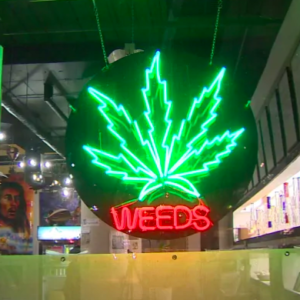State legislators are becoming sanguine about the virtues of marijuana. After decades-long fighting by grass-roots organizations to exonerate the “evil weed” of any moral or physical harm it may cause, public opinion is willing to give the peace pipe a chance.
Several factors have led to the normalization of tobacco, but one of them is not compelling evidence that ingesting cannabis is not without risk. One quite understandable virtue is the sense, however ambivalent, that use of cannabis can ameliorate or placate conditions or diseases that plague people, such as cancer, PTSD, Alzheimer’s and AIDS.
Another virtue is the tens of millions of dollars a state can accrue through several taxes and pay to play in the building of the Big Marijuana “free at last” consumer enterprise. A paradoxical virtue is allowing groups ostensibly harmed by the burdensome laws and restrictions of the past to share in the new cottage industry to commercialize cannabis.
Any nonbelievers of the virtues above can at least be assured that the commercialization of cannabis will be “controlled.” That’s odd! Why does something so harmless, victimless, peaceful, soothing and generally misunderstood need to be controlled?
One area of control is the marketing of cannabis. And this control has received the least amount of attention as public officials grapple with having to control yet another controlled substance, along with alcohol, tobacco and other drugs. As with most consumer products, the marketing minds are way ahead of us in telling us what we need, what we want, or what we must have …
For example, one medical marijuana dispensary in Pennsylvania is named “CURE” and purports “to support a proactive approach to using cannabis as a health management tool and help patients Discover Their Cure Today.”
Similarly, another dispensary is called “Curaleaf.” How did we make the big leap from a palliative remedy for those suffering to a cure? What medical evidence is there that cannabis cures a disease or condition?
Another dispensary setting up in Philadelphia is called “Restore” and uses a tag line in print ads that it is “Dispensing Happiness” in your neighborhood. Other dispensaries are marketed as taking a “holistic” approach to your maladies and some are sporting a “health-spa look.”
Entrepreneurs have started shops to destigmatize the use of cannabis. Similar to book clubs, you can come in and relax, learn how to use the products, and discuss your experience in a “nonjudgmental environment.”
And these are only the bricks and mortar exposures to the new enterprise. Get ready for full-page print ads in newspapers, billboards, radio ads, teasers at public transit stops, and all the way to trade shows telling us “when used as intended” ingesting cannabis is society’s new elixir.
Recall that smoking tobacco seemed to be a good idea at the time. Creative advertising teams working for tobacco companies were able to keep Americans smoking in the face of mounting medical reports that delineated the health hazards of smoking. Responding to the attacks from major health groups and policymakers wanting to “control tobacco,” the marketing messaging for tobacco morphed from being an elixir, to less irritating, to a safer smoke, and then to all-out imaging adverting — recall the Marlboro Man and Virginia Slims models.
While tobacco company sales reps, lobbyists and their robust group of apologists claimed that smoking should only be done by informed adults, marketing teams knew to create strategies for the invariably young replacement smokers. Similarly, marijuana will be normalized under the justification of some medicinal need, but be prepared for the recruitment of non-medical or recreational markets via aggressive and hard-to-control marketing.

